Imposters and usurpers, the world of cuckoo bumblebees is certainly an intriguing one. Meet the species you could encounter across the North East in a new blog by naturalist, Charlotte Rankin.
Like the Cuckoo bird, cuckoo bumblebees exploit the hard work of others. Nest usurpers, there are six of these bumblebee species in Britain. Females sneak into a bumblebee nest, kill or subdue the resident queen, and fool the workers into looking after her own young. Cuckoo bumblebees emerge from hibernation a bit later than queen bumblebees, timing it perfectly with established nests that aren’t too large that could resist her attack. More armoured than typical bumblebees, she has thicker chitin and a more powerful sting. She’ll mask herself in the nest’s scent before launching her attack. Cuckoo bumblebees can look very similar to their host species, specialising on a single species or a closely related group of bumblebees.
‘True’ and cuckoo bumblebees have lived side-by-side for many millennia and it’s a relationship that adds a fascinating dimension to the bee world. All six cuckoo bumblebees can be found in the North East. Please do share your sightings with the North East Bee Hunt to add to our understanding of these under-recorded bumblebees.
What are the tell-tale signs of a cuckoo bumblebee?
- As cuckoo bumblebees do not collect pollen, the hind legs of females lack the shiny pollen basket. The hind legs of cuckoo bumblebees are instead densely haired.
- They often have sparser fur, revealing the shiny black chitin (skin) underneath. This, in addition to their duller and smoky wings, gives them a darker appearance than typical bumblebees.
- Their buzz is deeper than typical bumblebees. They belong to a sub-group of bumblebees ‘Psithyrus’, which means ‘whispering’ in Latin.
- Cuckoos also have boxier and squarer heads than typical bumblebees.
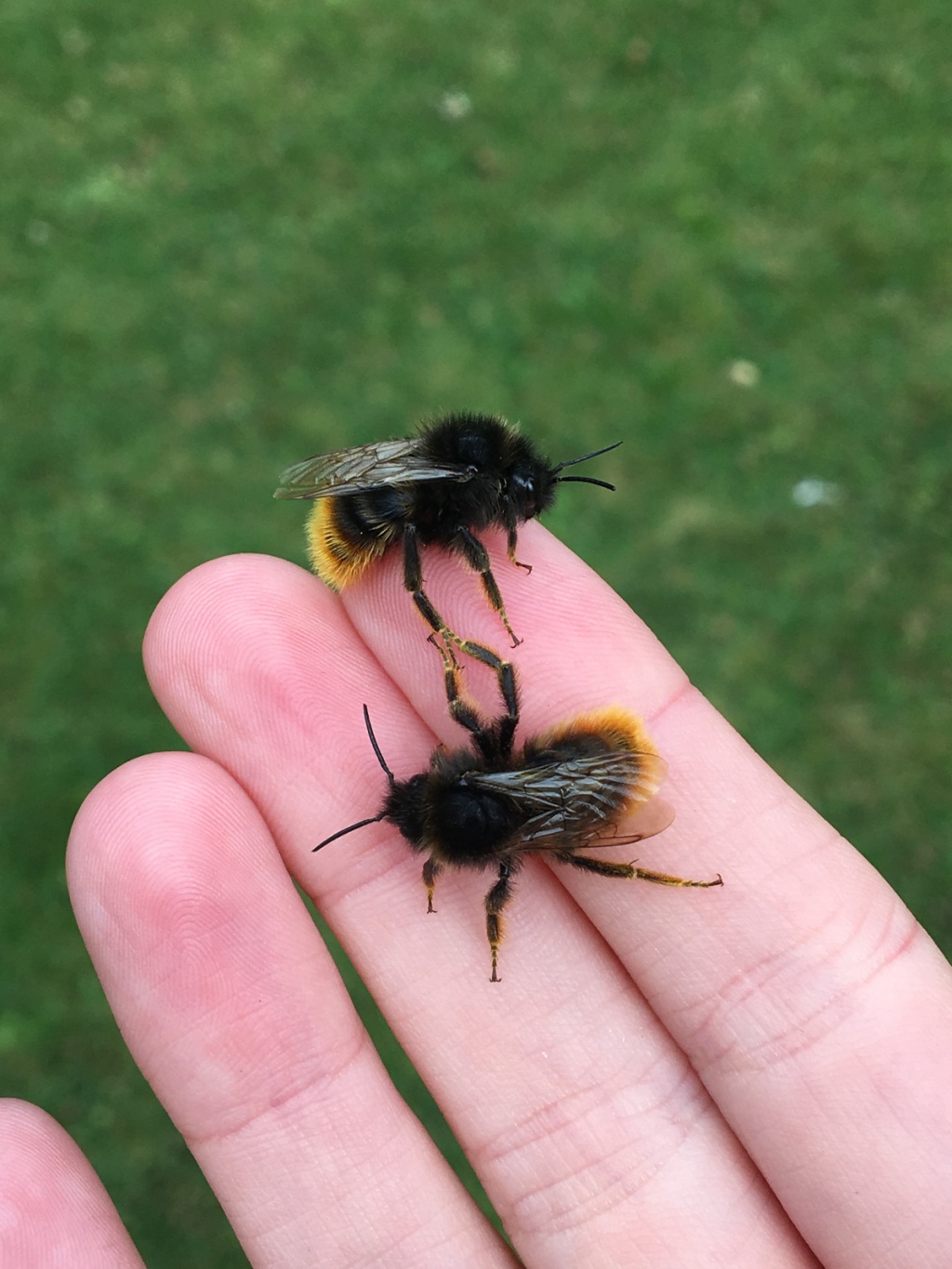
Red-tailed Cuckoo Bee Bombus rupestris
Almost identical to its host at first glance, the Red-tailed Cuckoo Bee attacks the nests of Red-tailed Bumblebees (Bombus rupestris). Considered a scarcer bee in the North East, sightings are becoming more widespread across the region. Females are on the wing from May while males and new females can be observed from July onwards.
Females are large (the largest wingspan of any bumblebee!) with a red tail and black fur. Their wings are much darker than any other bumblebee species and can appear almost black. Smaller than the females, males are the only male cuckoos with an extensive red tail. Bands of paler yellow or greyish hair are also usually present on males.
Explore more images here
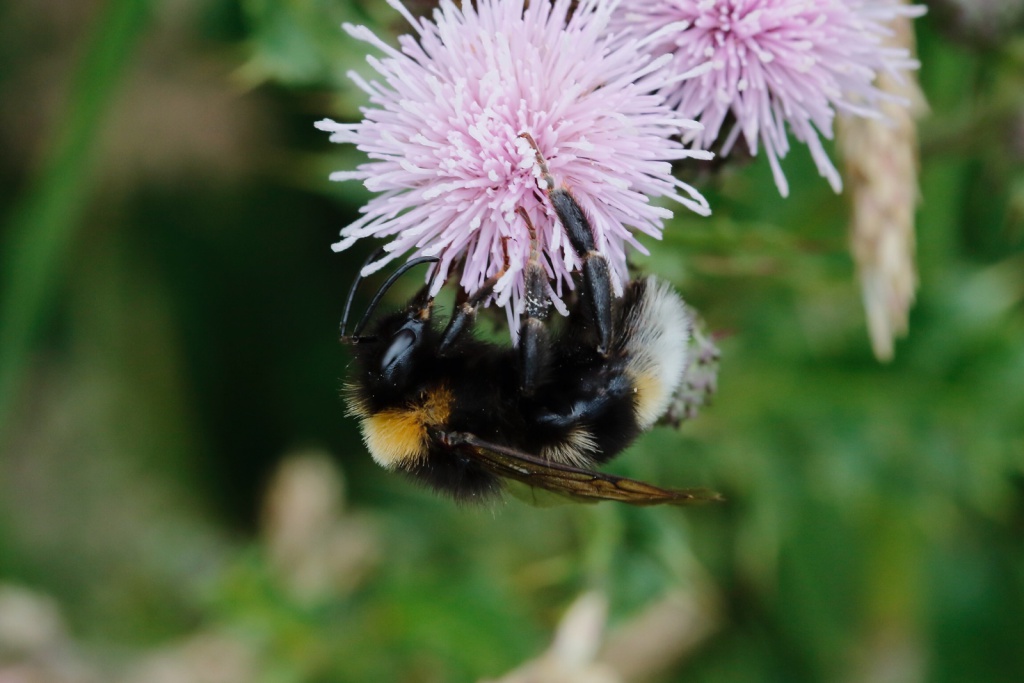
Gypsy Cuckoo Bee Bombus bohemicus
The Gypsy Cuckoo Bee attacks the nests of White-tailed Bumblebees (Bombus lucorum group). Females emerge from April with males and new females from June. This is one of the more widespread cuckoo bumblebees in the North East.
This is one of two cuckoo bumblebees that has two yellow side flashes on top of a white tail. The Gypsy Cuckoo Bee also has a pale yellow collar behind the head. Males have additional yellow banding across the bottom of the thorax and top of the abdomen, forming a well-defined midriff band.
This species is very similar in appearance to the Vestal Cuckoo Bee Bombus vestalis. Unlike the Vestal Cuckoo Bee, this cuckoo is ‘fluffier’ and the banding is a paler yellow.
Explore more images here
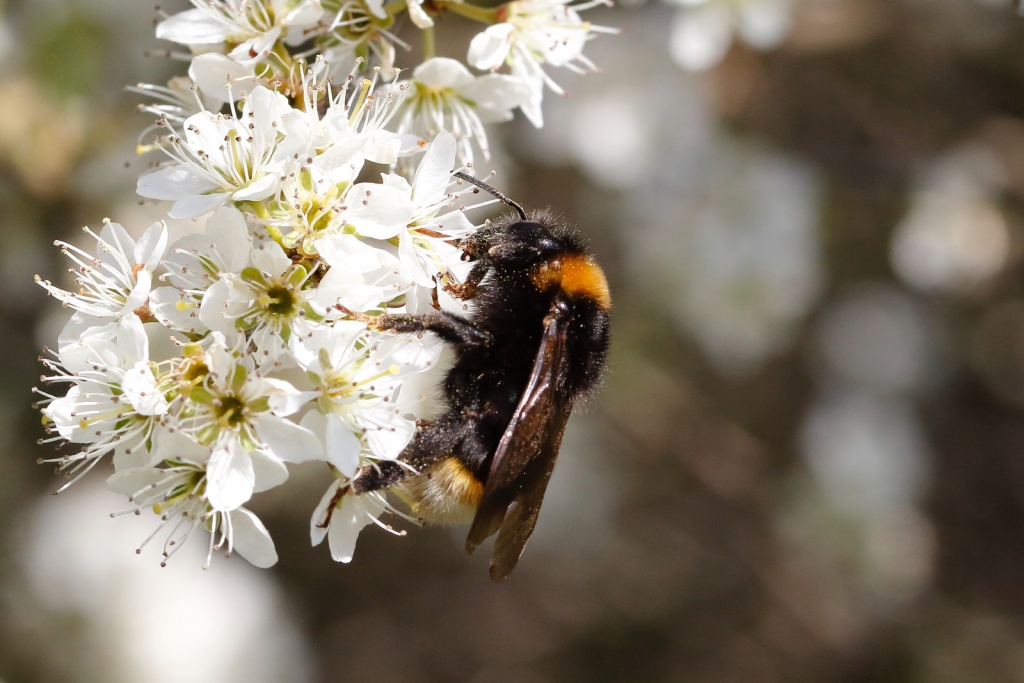
Vestal Cuckoo Bee Bombus vestalis
The Vestal Cuckoo Bee attacks Buff-tailed Bumblebee Bombus terrestris nests. Females can be on the wing from late March with males and new females from May.
This cuckoo has two sulphur-yellow side flashes on top of a whitetail. The black fur forms a neat coat and there is a ginger-yellow collar behind the head. A hand lens or a good quality image can reveal scattered black hairs in the yellow collar, unlike the similar Gypsy Cuckoo Bee. Males may have an additional but weak yellow midriff band.
Vestal and Gypsy Cuckoo Bees can be tricky to tell apart. It is always worth sharing images on an identification group for help and suggestions from friendly experts. Entomologist and bee expert Steven Falk has also produced a handy crib sheet.
Explore more images here
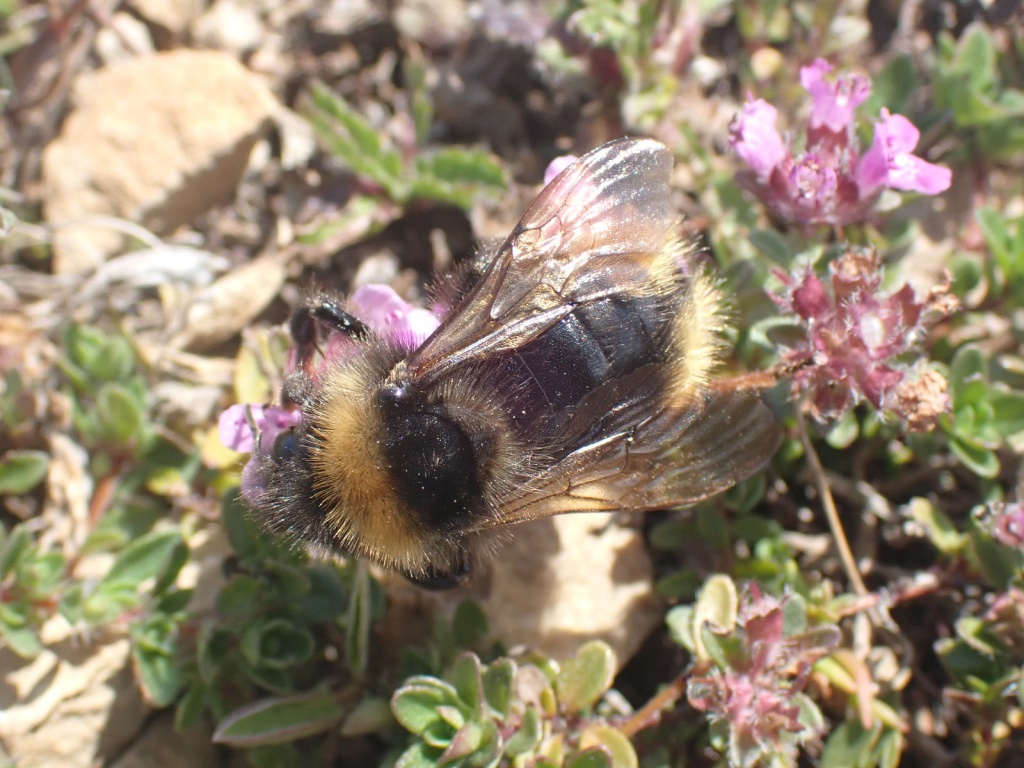
Field Cuckoo Bee Bombus campestris
The Field Cuckoo Bee attacks carder bumblebee nests, such as the Common Carder Bee Bombus pascuorum. Females can be seen from April with males and new females from June.
Females have a unique-patterned tail – it’s black-haired in the centre with buff-coloured sides. Females also have a dull yellow collar and a yellow band at the bottom of the thorax. The abdomen is especially sparsely-haired and appears shiny.
Males are very variable! Paler males have an extensive white or buff tail and pale yellow banding on the collar and midriff. Other males can be mostly black with a white or buff tail. Trickier males can be confirmed under a microscope.
Explore more images here
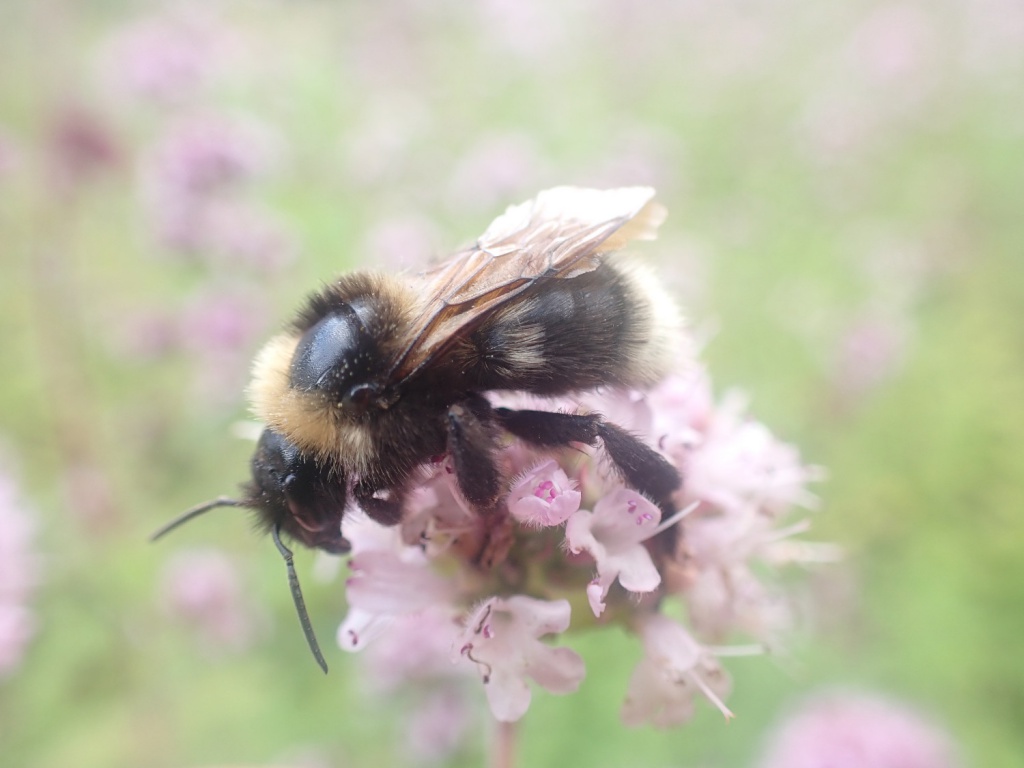
Barbut’s Cuckoo Bee Bombus barbutellus
Looking very similar to its host, Barbut’s Cuckoo Bee attacks Garden Bumblebee Bombus hortorum nests. Look out for females from late April with new females and males emerging from late June.
This cuckoo has the same general patterning as the Garden Bumblebee: a white tail with a yellow collar behind the head and a yellow midriff band. There is usually a yellow tuft of hair on top of the head. Look out for the boxier head, densely-haired hind legs and sparser fur that characterises cuckoo bumblebees.
Explore more images here
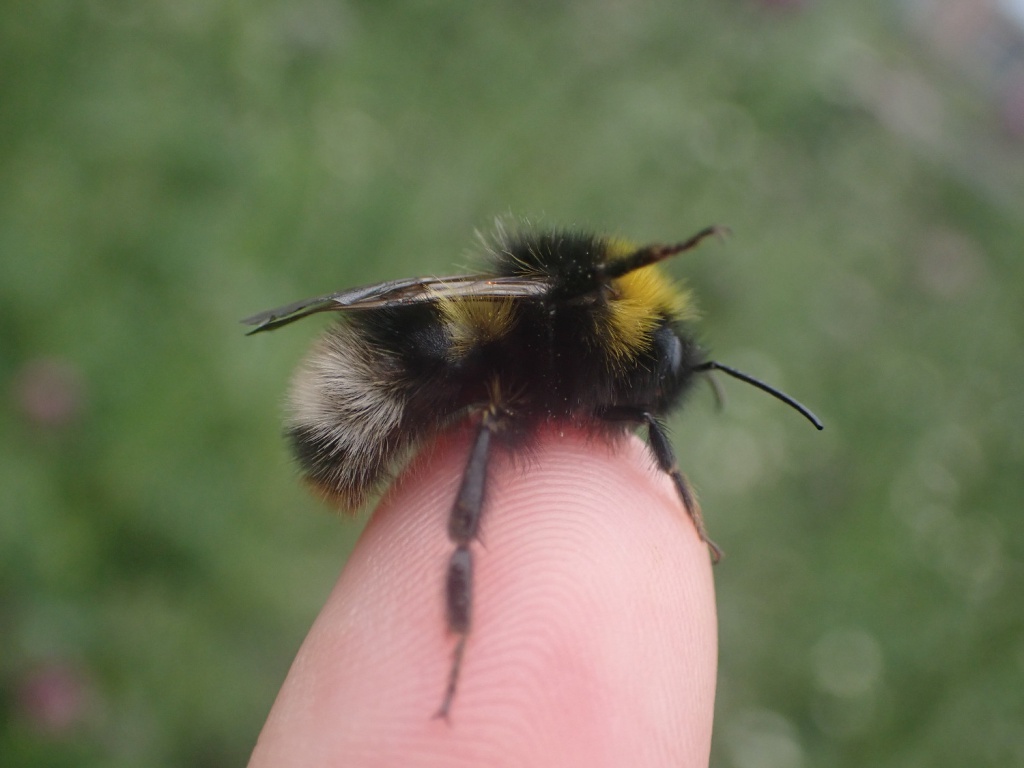
Forest Cuckoo Bee Bombus sylvestris
The Forest Cuckoo Bee takes over Early Bumblebee Bombus pratorum nests. One of the first cuckoos to emerge, look out for females from late March.
This is a small and fluffy cuckoo with a distinctive downcurved abdomen. Females have a white tail, with a yellow collar behind the head and a weak yellow band at the top of the abdomen.
Males are variable but one form is particularly distinctive. This form has a white or yellow tail, which transitions into black hair and then a red tail tip. This tail tip can also be black.
Explore more images here
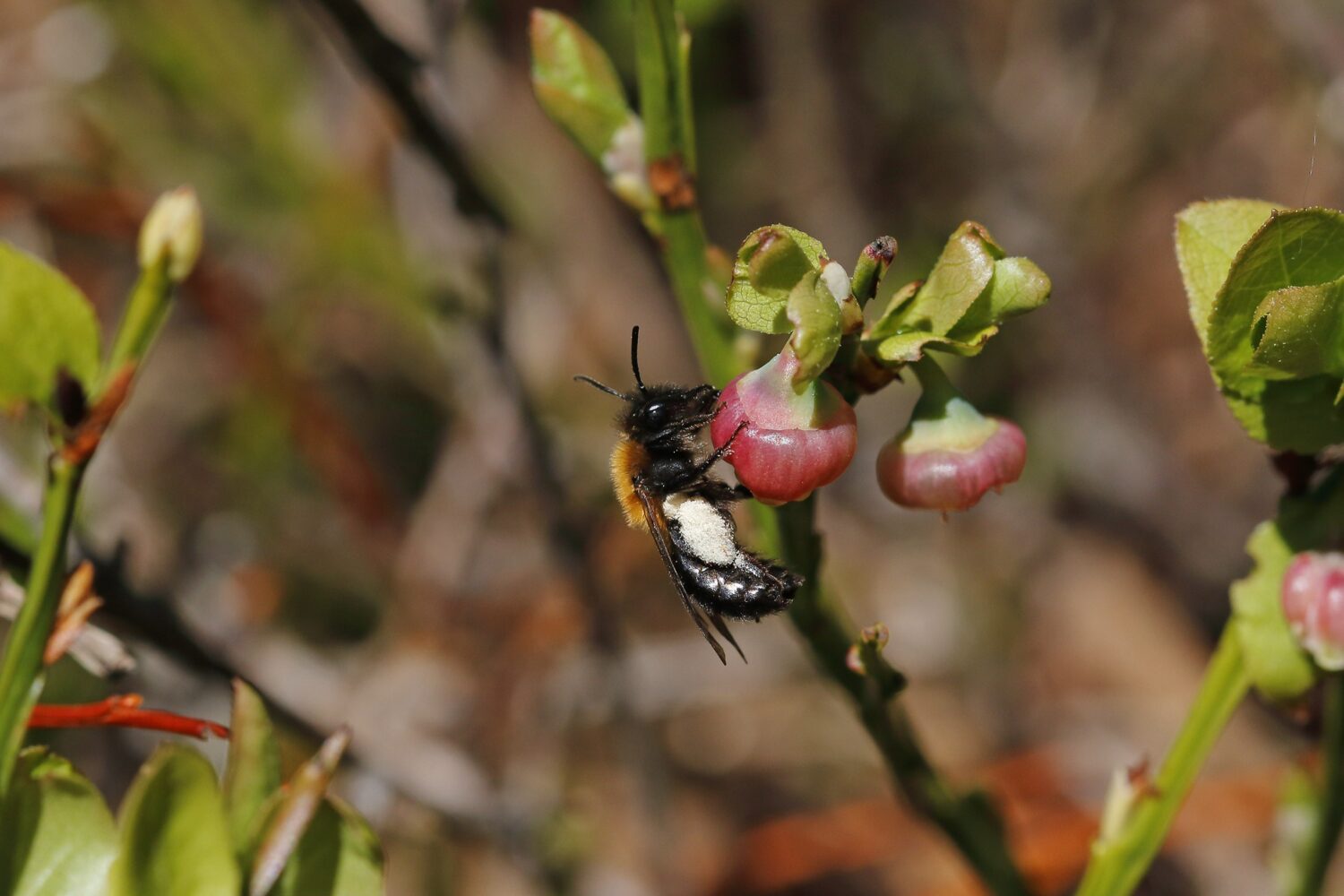
Join the North East Bee Hunt
Urban or rural, beginner or expert, we need your help to record wild bees across the North East this spring and summer.
Your records can add to our understanding of bees in the region and inform conservation and monitoring efforts.
Taking part is easy and every record counts, wherever you live in the region. Records of all bee species are encouraged.